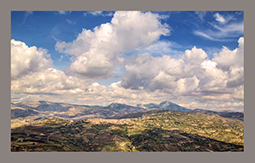scarica l’articolo in formato .pdf: La tarda antichità nell’entroterra occidentale di Agrigento. Una proposta di lettura dell’assetto insediativo a partire dal Sistema Informativo Territoriale (SIT)
The digitalisation and the analysis of data coming from the rural settlement of the western hinterland of Agrigento, show that settlement pattern is characterized by typical phenomena for the Late Antiquity: the exponential increase in the number of sites and their tendency to create system. This is particularly clear in those sectors with a greatest agricultural potential within the whole territory, such as the areas of Siculiana, Eraclea Minoa and Raffadali. The development of these large rural districts may be read as the symptom of a deep change in the ways and in the places of agricultural production. This phenomenon can be related to the socio-economic changes that were progressively triggered by the foundation of Constantinople and the conquest of Africa by Vandals.


